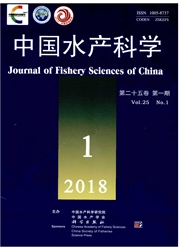

 中文摘要:
中文摘要:
为研究半滑舌鳎(Cynoglossus semilaevis) vasa(Csvasa)基因调控区的功能,在已克隆的Csvasa 基因编码序列的基础上,采用基因组步移和PCR扩增的方法克隆得到Csvasa调控区,通过生物信息学方法分析vasa基因5′区,并构建了含Csvasa 基因调控区的绿色荧光蛋白(GFP)表达载体(pCsvasa-GFP-T),进一步通过显微注射技术初步验证调控区的驱动活性。结果表明,通过基因组步移和PCR扩增获得Csvasa 5′区5166 bp和3′区1655 bp,利用在线生物信息学软件对5′区序列进行分析,发现在转录起始点上游26 b p处存在保守的TATA框,以及潜在的转录因子结合点如 SRY、Oct-1、Sox-5、CREB、GATA、AP-1、C/EBP、Sp-1、c-Myc、HNF、NKX2-5、V-Myb 等。通过显微注射技术,将所构建的 pCsvasa-GFP-T 鳉表达载体注射于青(Oryzias latipes)受精卵并进行培养观测,发现Csvasa调控区能够驱动GFP在青鳉胚胎内表达,荧光表达率为81%。将有荧光的胚胎培养为成鱼,检测外源基因的整合率为11.5%。这些结果为进一步研究半滑舌鳎原始生殖细胞(PGCs)的标记、追踪和操作研究以及半滑舌鳎的性别控制等奠定了基础。
 英文摘要:
英文摘要:
The Vasa gene is an excellent candidate molecular marker for studying primordial germ cells (PGCs) because of its specific expression in germ cell lineages. PGCs can be labeled by a reporter gene driven by regula-tory regions of the vasa gene. Half-smooth tongue sole (Cynoglossus semilaevis) is an economically important flatfish in China, and the females of this species grow two to four times bigger than males. Sex reversal is common in this fish and females cannot guarantee egg production by natural spawning under artificial culture conditions. Therefore, transplantation of PGCs and surrogate broodstock production might be employed to improve the pro-duction of this fish. Promoter choice in transgenic research is important for regulating expression of a foreign gene. However, the function of vasa gene (Csvasa) regulatory regions in tongue sole remains unknown. We aimed to isolate the regulatory regions of the Csvasa gene, examine its transcriptional activity in transgenic medaka fish, and identify the conditions required for manipulation of PGCs. Two DNA fragments, including a 5166-bp 5′region and a 1655-bp 3′region, were obtained by genome walking and polymerase chain reaction of genomic DNA. The 5′ region of Csvasa contains the major promoter region, exon 1, intron 1 and exon 2. The transcription initiation site and a putative TATA box were identified and potential transcription factor binding sites were bioinformatically analyzed. Several potential transcription factor binding sites that may perform important function relating to gene transcription, such as SRY, Oct-1, Sox-5, CREB, GATA, AP-1, C/EBP, Sp-1, c-Myc, HNF, NKX2-5, and V-Myb were predicted. Based on the above information, the Csvasa regulatory regions were inserted into a pEGFP-N3 vector lacking the CMV promoter. This vector expresses the green fluorescent protein(GFP). The recombinant pCsvasa-GFP-T plasmid was injected into medaka fertilized eggs by microinjection. Microfluoroscopy revealed that the level of GFP expression wa
 同期刊论文项目
同期刊论文项目
 同项目期刊论文
同项目期刊论文
 Establishment and Characterization of a Testicular Cell Line from the Half-Smooth Tongue Sole, Cynog
Establishment and Characterization of a Testicular Cell Line from the Half-Smooth Tongue Sole, Cynog Whole-genome sequence of a flatfish provides insights into ZW sex chromosome evolution and adaptatio
Whole-genome sequence of a flatfish provides insights into ZW sex chromosome evolution and adaptatio 期刊信息
期刊信息
